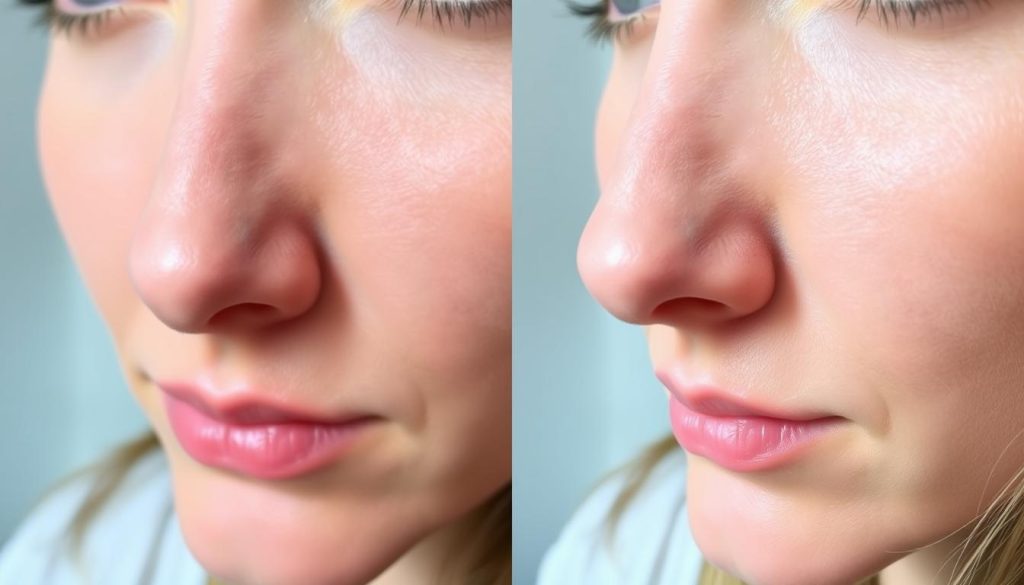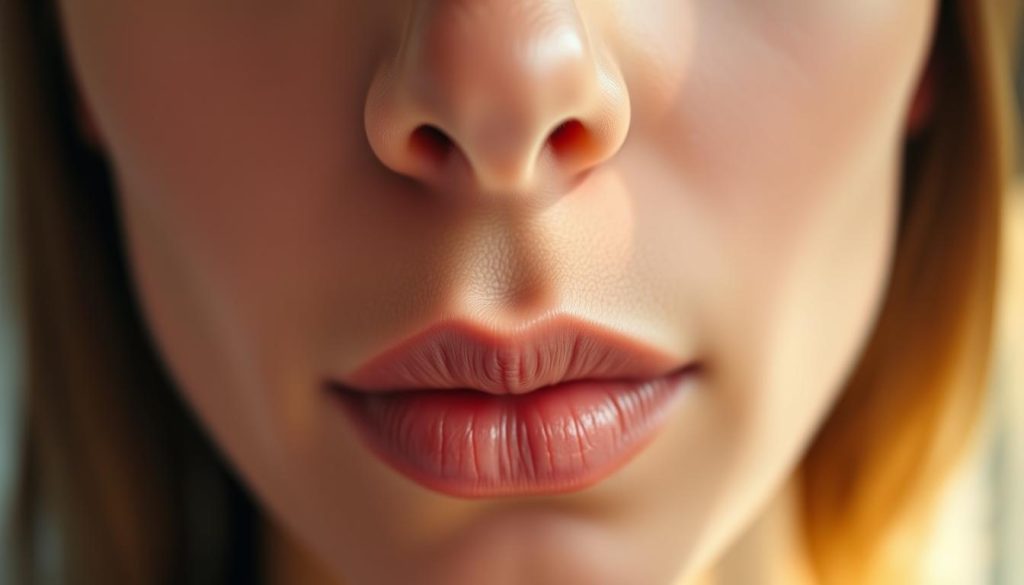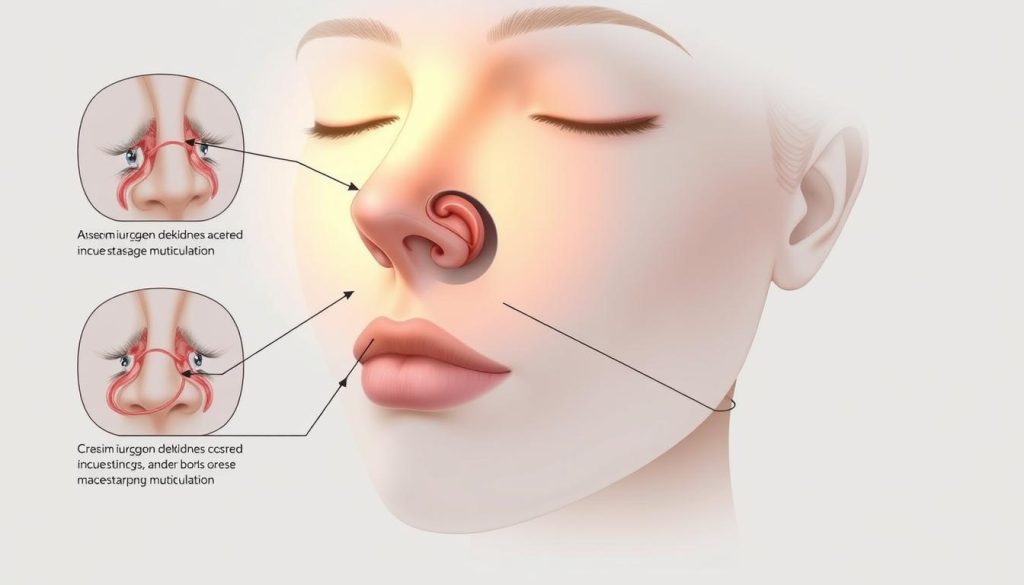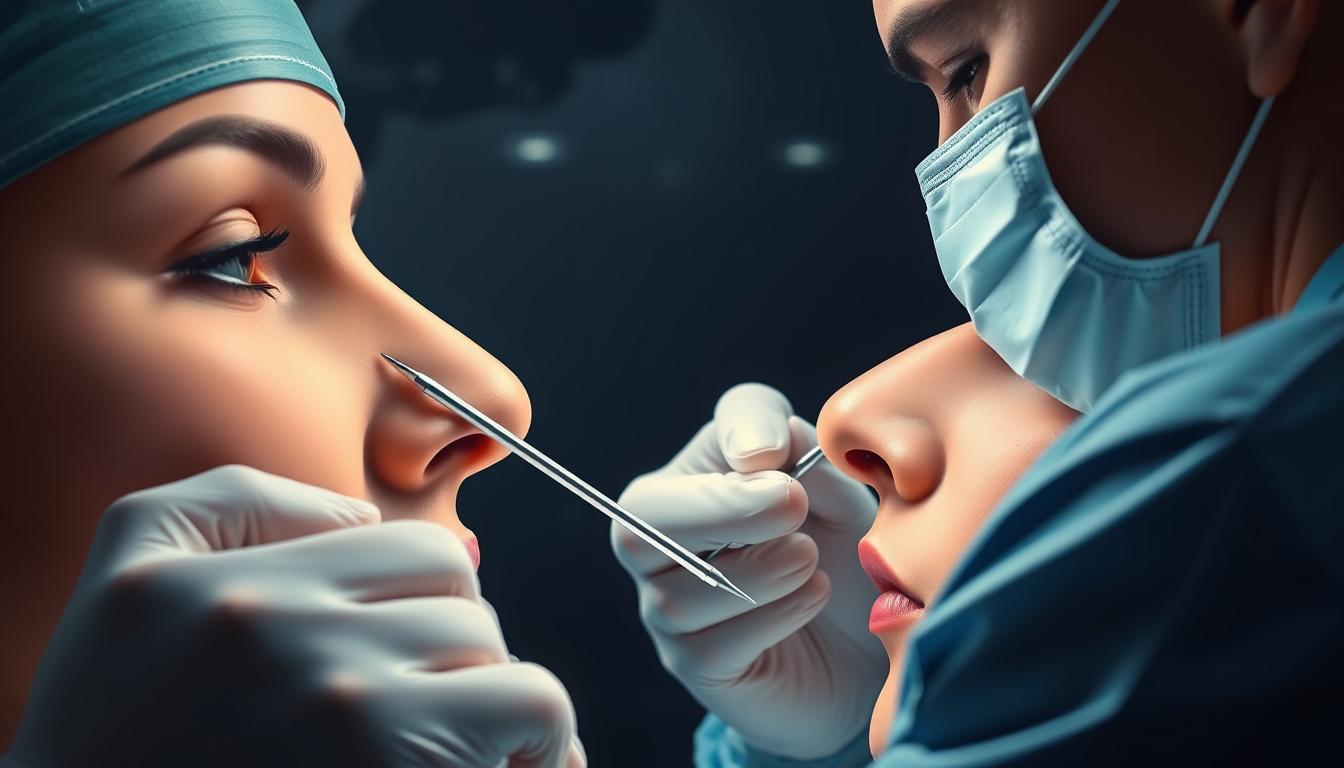Rhinoplasty, commonly known as nose lift surgery, is a transformative facial plastic surgery procedure that can significantly enhance one’s appearance and confidence.
This comprehensive guide will walk you through the entire process, from initial consultation to recovery, helping you understand what to expect from this life-enhancing procedure.
Modern rhinoplasty techniques address both aesthetic concerns and functional issues, creating harmony between facial features while potentially improving breathing. The surgery can correct a wide range of nasal concerns, including prominent bumps, crooked appearance, and bulbous tips.
Key Takeaways
- Rhinoplasty is a versatile procedure that can enhance both the appearance and function of the nose.
- The surgery can address various nasal concerns, including aesthetic and structural issues.
- Understanding the procedure, benefits, and realistic results is crucial for making an informed decision.
- Modern rhinoplasty techniques can improve breathing and create harmony between facial features.
- A comprehensive guide can help potential patients navigate the process from consultation to recovery.
Understanding Nose Lift Surgery
Rhinoplasty is a surgical procedure that can address a range of nasal concerns, from aesthetic issues to functional problems like breathing difficulties.

What is Rhinoplasty?
Rhinoplasty, commonly referred to as nose surgery, involves reshaping the nasal structures, including bone, cartilage, and skin, to achieve desired aesthetic or functional changes. By doing so, a cosmetic surgeon can help patients achieve one or more of the following: straighten a crooked nose, smooth a prominent bump in the bridge, reduce the length of an over-protruding nasal tip, refine a bulbous nasal tip, narrow a nose that is too wide, or restore symmetry following injury.
Common Reasons for Seeking Nose Surgery
Patients seek rhinoplasty for various reasons, including aesthetic concerns such as dissatisfaction with the nose looks, a prominent nasal hump, or an asymmetrical appearance. Functional issues, like a deviated nasal septum or breathing problems, are also significant motivators. Trauma-related deformities and congenital abnormalities are other common reasons for undergoing nose surgery.
The goals of rhinoplasty are highly individual, reflecting the diverse needs and preferences of patients. Whether it’s to correct a structural issue affecting breathing or to enhance the overall appearance of the nose, rhinoplasty offers a tailored solution.
Types of Nose Lift Procedures
There are multiple approaches to nose lift surgery, catering to different needs and preferences. The choice of procedure depends on the patient’s nasal structure, the desired outcome, and the surgeon’s professional recommendation.
Open Rhinoplasty
Open rhinoplasty involves making an incision across the columella, the skin between the nostrils, allowing for greater visibility and access to the nasal structures. This approach is often used for more complex reshaping or when significant changes are required. It provides the surgeon with a clearer view, enabling precise alterations.
Closed Rhinoplasty
In closed rhinoplasty, all incisions are made within the nostrils, resulting in no visible scarring. This technique is preferred for less complex cases or when the goal is to make subtle adjustments. It typically results in a quicker recovery.
Tiplasty
Tiplasty focuses specifically on reshaping the nasal tip. It’s a specialized technique used to address concerns related to the tip’s shape, size, or orientation. Tiplasty can be performed using either an open or closed approach, depending on the complexity of the case.
Non-Surgical Rhinoplasty
Non-surgical rhinoplasty utilizes dermal fillers to temporarily reshape the nose without the need for surgery. This method is ideal for patients seeking minor adjustments or those who wish to “test-drive” a nose reshaping before committing to surgery.
| Procedure | Description | Recovery Time |
|---|---|---|
| Open Rhinoplasty | Involves an incision across the columella for complex reshaping | Typically longer due to the invasive nature |
| Closed Rhinoplasty | Incisions within the nostrils for less complex adjustments | Generally quicker, with less downtime |
| Tiplasty | Focuses on reshaping the nasal tip | Varies depending on the technique used |
| Non-Surgical Rhinoplasty | Uses dermal fillers for temporary reshaping | Minimal to no downtime |
Benefits of Nose Lift Surgery
The benefits of nose lift surgery are multifaceted, encompassing both cosmetic enhancements and improvements in nasal function. This procedure is designed to address a range of concerns, from aesthetic issues to functional problems.
Aesthetic Improvements
Rhinoplasty can significantly enhance the appearance of the nose, making it more proportionate to other facial features. Aesthetic improvements can boost an individual’s confidence and self-esteem. Modern surgical techniques allow for precise modifications to the nasal structure, resulting in a more pleasing appearance.

Functional Benefits
Functional rhinoplasty can significantly enhance breathing quality by correcting structural abnormalities like a deviated septum or collapsed nasal valves. Patients with chronic nasal obstruction often experience dramatic improvements in sleep quality, exercise tolerance, and overall quality of life following corrective rhinoplasty. The procedure may also reduce symptoms associated with chronic sinusitis, snoring, and some forms of sleep apnea.
The Rhinoplasty Consultation Process
A thorough consultation is essential for a successful rhinoplasty outcome, allowing patients to understand the procedure and its risks. During this process, the surgeon will assess the patient’s nose and discuss their goals and expectations.
What to Expect During Your Initial Consultation
The initial consultation involves a comprehensive discussion about the patient’s needs and concerns. The surgeon will examine the nose and explain the surgery process, including the potential risks and benefits. This is also an opportunity for patients to ask questions and understand what to expect from the rhinoplasty procedure.
3D Imaging and Planning
At UT Southwestern, 3D imaging is used to show patients how their nose might look after surgery. The plastic surgeon can create models of the nose before and after rhinoplasty, helping patients visualize the anticipated results. This tool enhances communication between the patient and the plastic surgery team, ensuring that everyone is aligned on the goals of the nose job surgery.
The Nose Lift Surgery Procedure

Understanding the details of the nose lift surgery procedure is crucial for patients considering rhinoplasty surgery. This complex process involves several key steps that ensure a successful outcome.
Before Surgery Preparation
Before undergoing rhinoplasty, patients must prepare themselves for the procedure. This includes a thorough evaluation, including medical history review, physical examination, and possibly laboratory tests to ensure safety. The surgeon will also discuss the patient’s goals and expectations.
During the Procedure
The rhinoplasty procedure typically takes a few hours to complete, depending on the complexity of the case. The surgeon will make precise incisions and reshape the nose according to the agreed-upon plan. The surgery is usually performed as an outpatient procedure, allowing patients to return home the same day.
Anesthesia Options
Patients undergoing rhinoplasty have two primary anesthesia options: general anesthesia and local anesthesia with intravenous sedation. General anesthesia renders the patient completely unconscious, while local anesthesia numbs the surgical area, keeping the patient relaxed but not fully unconscious. The choice between these options depends on multiple factors, including the complexity of the procedure, expected surgical time, patient health status, and surgeon preference.
Recovery After Rhinoplasty
Understanding the recovery process after rhinoplasty is essential for patients to manage their expectations and ensure a smooth healing process. The recovery period involves several stages, from immediate post-operative care to returning to normal activities.
Immediate Post-Operative Care
The first 24-48 hours after rhinoplasty surgery are critical. Patients should dedicate this time to rest, minimizing movement and following post-operative care instructions to optimize initial healing. This period is crucial for setting the stage for a successful recovery.
Stages of Swelling and Healing
For the first 1 to 2 weeks, many patients experience bruising and swelling around the nose. However, the majority of this swelling subsides after 10 to 14 days. Effective post-operative care can significantly reduce the extent of bruising and swelling.

Timeline for Returning to Normal Activities
Most patients can return to desk work or school within 7-10 days. Light physical activities like walking can be resumed around the two-week mark. However, strenuous exercise should be avoided until at least 3-4 weeks post-surgery. A gradual return to normal activities is recommended.
| Activity | Recommended Timeframe |
|---|---|
| Return to desk work/school | 7-10 days |
| Light physical activities | 2 weeks |
| Strenuous exercise | 3-4 weeks |
| Contact sports | 6-8 weeks |
By following the surgeon’s instructions and being patient, individuals can ensure a smooth recovery and optimal results from their rhinoplasty surgery.
Results and Expectations
Understanding the results of nose lift surgery is crucial for managing expectations. After the procedure, patients can expect a recovery process that involves various stages of healing.
Short-Term Results
Initially, the nose may appear swollen, and the full effects of the surgery may not be immediately visible. Swelling is a normal part of the healing process, and it can take several weeks for the nose to start looking more natural.
Long-Term Outcomes
As the swelling subsides, the final results of the nose lift surgery become more apparent. The long-term outcomes can include improved aesthetic appearance and, in some cases, functional improvements, such as a corrected septum.
Asymmetrical Healing
It’s common for patients to experience asymmetrical healing, where one side of the nose appears more swollen than the other. This is a normal part of the recovery process and typically resolves on its own. Factors contributing to asymmetrical healing include pre-existing nasal asymmetry and differences in tissue thickness.
Choosing the Right Surgeon for Your Nose Lift
Selecting a qualified surgeon is crucial for a successful rhinoplasty procedure. The complexity of nose surgery demands a specialist with extensive experience in facial plastic surgery. When searching for a surgeon, consider their credentials, such as board certification in otolaryngology or plastic surgery, and their specific experience with rhinoplasty procedures.
Reviewing before-and-after portfolios of previous patients can provide insight into a surgeon’s skill and aesthetic sensibility. It’s essential to find a surgeon whose understanding of your aesthetic goals aligns with your expectations. Additionally, consider their experience with specific techniques, such as septoplasty for a deviated septum or reconstructive work for birth defects.
During your consultation, pay attention to the surgeon’s communication style and their ability to explain the procedure’s possibilities and limitations based on your unique anatomy. By carefully evaluating these factors, you can make an informed decision and achieve the best possible outcome for your nose job.
FAQ
What is the difference between open and closed rhinoplasty?
Open rhinoplasty involves an incision between the nostrils, providing a more extensive view of the nasal structure, while closed rhinoplasty involves incisions within the nostrils, resulting in less visible scarring.
How long does it take to recover from a rhinoplasty procedure?
The initial recovery period typically lasts one to two weeks, but it may take several months for the swelling to fully subside and the final results to become apparent.
Will rhinoplasty improve my breathing?
If the procedure includes correcting a deviated nasal septum, it can significantly improve breathing by allowing for better airflow through the nasal passages.
Can I undergo rhinoplasty if I have a history of nasal problems?
Individuals with a history of nasal issues, such as a deviated septum or chronic sinusitis, may still be candidates for rhinoplasty, but they should discuss their condition with their surgeon to determine the best course of action.
Are the results of rhinoplasty permanent?
While the results of rhinoplasty are generally long-lasting, the nasal structure can change over time due to aging or other factors, potentially affecting the outcome.
Can I combine rhinoplasty with other facial plastic procedures?
Yes, many individuals choose to combine rhinoplasty with other procedures, such as septoplasty or facial rejuvenation treatments, to achieve a more comprehensive facial transformation.
How is the cartilage and bone restructuring done during rhinoplasty?
The surgeon will use various techniques, including osteotomies and cartilage grafting, to reshape the nasal structure and achieve the desired aesthetic and functional results.
What are the potential risks and complications associated with rhinoplasty?
As with any surgical procedure, there are risks, including bleeding, infection, and scarring, which should be discussed in detail with the surgeon during the consultation.
